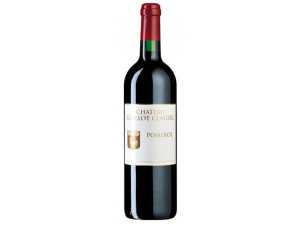You have no items in your shopping cart.
Wine Pomerol
The Pomerol AOC is located in the Libourne region, above the Isle, a tributary of the Dordogne. It is famous throughout the world for the famous Petrus wine. Considered one of the rarest and most expensive wines ever made, it is favoured by the world's greats. Read more on Pomerol
-
Top Selling-20%
-
Top Selling
-
Top Selling
- -32%
Appellation Pomerol
The Pomerol appellation was already attracting pilgrims
A witness to Roman civilisation, Pomerol, is a very old vineyard, initially planted by the Romans, then developed by the Hospitallers of St John of Jerusalem. The small village was an obligatory passage and a welcome stopover for pilgrims to Santiago de Compostela who were accommodated there during their journey. The wines of the region were highly appreciated and their reputation, peddled by the pilgrims, was already famous outside France.
In the 12th century and throughout the Middle Ages, the vineyards of Pomerol were cultivated by the commanderies of the Hospitallers of St John of Jerusalem (predecessors of the Knights of Malta). Destroyed by the Hundred Years' War and the Wars of Religion, the vineyard was restored to its former glory during the 15th and 16th centuries. Since then, viticulture has never ceased to flourish in the region. The wines of the famous appellation are sought after and renowned throughout the world. During the 19th century, they were already widely exported by sea.
At the same time, then in full expansion, the vineyard of Bordeaux was completely destroyed by phylloxera, like a large part of the French vineyards. The entire vineyard of Pomerol was then replanted with merlot. The Pomerol wine and agricultural union was created in 1900, playing a role in the defence of the famous appellation. A judgement of 29 December 1928 at the Bordeaux civil court moreover strictly defined its limits. Then the Appellation d'origine contrôlée was recognised on 8 December 1936. In 2011, its specifications were reviewed and corrected, as was the case for all French appellations.
This vineyard combines tradition and modernity and continues to expand. It is designated by the French label AOC (Appellation d'origine contrôlée) and the European label AOP (Appellation d'origine protégée). Its fame is international, as it was within it that the famous Petrus was born, which has not ceased to conquer the whole world since then.
What are the characteristics of the Pomerol vineyard?
This vineyard of about 800 hectares extends around the commune of Pomerol, Libourne and up to the limit between St-Emilion and Pomerol. To the north, it is limited by the Barbanne. The French market represents about 40% of the production, 60% for the foreign market.
At Pomerol merlot is king! The very clayey soils that characterise the region allow it to express itself like nowhere else. It represents 80% of the vineyard and is often associated with cabernet franc (10%), cabernet-sauvignon (8%) and malbec (2%).
The region offers a temperate oceanic climate. It is sufficiently warm to allow vine cultivation on flat land. Rainfall is evenly distributed throughout the year, although some autumns can be rainy. Winters are mild and summers are hot without drought. The conditions are therefore extremely favourable for the vine.
The main grape varieties that go into the composition of Pomerol wine are: merlot in large part, petit verdot, cabernet-franc, cabernet-sauvignon, malbec. Pomerols are dry red wines. They are considered as still wines. They are sensual wines that can be enjoyed young, but they can also benefit from a little ageing.
Due to their excellent reputation, as far as Pomerol wines are concerned, demand always far exceeds supply. The AOC produces 31,000 hectolitres of red wine each year. The appellation covers an area of 813 hectares with 138 owners. It is one of the smallest production areas in the Bordeaux region (0.7% of the surface area of the Bordeaux vineyards).
Pomerol wines have a remarkable capacity for ageing
.The dress of Pomerol is dark ruby, it can have purplish tints during its youth. On the nose, the bouquet is complex, dense and rather fine. The primary notes evoke ripe red stone fruits, but after aeration, the bouquet evolves towards truffle, leather, undergrowth, and sometimes animal notes. On the palate, the attack is frank, the density and power immediately striking. Suavity and roundness are there while the tannins are firm and powerful. The chewiness gives a velvety feel. The ageing capacity can exceed 30 years for the most remarkable vintage. Its serving temperature should be 16°C, it is recommended to decant it one or two hours before serving.
What to drink a Pomerol with
.The Pomerol matches almost universally, especially with red meat, game, dry cheeses. It will also work wonders with dishes with truffles or foie gras. You can also, quite simply, associate it with a rib of beef or a duck breast.
What are the great vintages in Pomerol?
2010 and 2016 are the last exceptional vintages of the appellation. Great years like these often coincide with extremely favourable weather conditions for the Merlot grape. More recently, 2018 was crowned a great vintage, as were 2015 and 2001. On the whole, these are wines with great ageing potential. The years considered as "vintages of the millennium" are 1982 and 2005.
The Pomerol vineyards are full of exceptional estates
.Petrus
The Petrus vineyard, owned by the Jean-Pierre Moueix establishments covers 11.5 hectares and produces around 30,000 bottles per year. It is recognised as one of the greatest wines of Bordeaux. It is the most prestigious wine in France. The extremely favourable combination of oceanic climate and clay soils makes it a rare wine, recognised worldwide.Château Leglise Clinet
It was in 1882, that Château L'Égliset-Clinet was created. Today, the talented winemaker, Mr. Denis Durantou, has elevated his vineyard to the top of the Pomerol AOC. The vines benefit from a terroir of clay and gravel-clay. These great wines for ageing, mature for about 10 years before entering their golden age.Château Lévangile
Originally from Libourne, the Léglise family was the founder of Château L'Évangile. In the 18th century, they contributed to the creation of the Pomerol vineyard. In 1990, the Domaines Barons de Rothschild (Lafite) acquired L'Évangile. A restoration and renewal plan initiated in 1998 enabled the estate to accumulate great vintages from 1995 to 2005, with an exceptional vintage in 2005!
Bordeaux appellations






































 TWIL - Achat de Vin
TWIL - Achat de Vin


